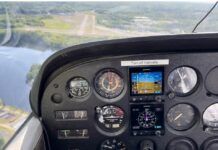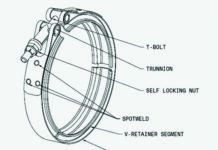At press time an FAA final rule has been established to address the potential inflight shutdown of Aspen Evolution series PFD and MFD systems, including Aspen emergency backup displays. This applies to a wide swath of units and there have been at least 35 instances of screens going dark and rebooting uncommanded. In multi-screen suites (PFD and MFD combinations) all screens can be affected, and of course the shutdown takes down primary flight data in all suites where backup instruments have been removed.
The good news is the fix can be accomplished with a field-loaded software update (version 2.10 or 2.10.1) and a revision of the aircraft’s flight manual supplement.
According to the FAA document (2020-16-08), the AD was prompted by an automatic reset occurring when the display’s internal monitor detects a potential fault. Luckily, most of the failures to date have been recoverable. In other words, when it fails the screen essentially goes dark and automatically goes into a reboot sequence, which lasts roughly 53 seconds. For displays that are connected to autopilots (which is most) expect the autopilot to disengage as it loses the data.
If you own one of these affected systems you should have received Aspen Operator Advisory OA2020-01, dated March 3, 2020. The document advises operators of the reset and provides operating instructions. The ultimate fix is in Aspen’s service bulletin SB2020-01, dated April 1, 2020, which describes the process for updating the unit software. Until the software is loaded the AD requires revising the AFM limitations section noting that the system is limited to day VFR only.
The only out-of-pocket labor costs to customers should be the shop time it takes to revise the flight manual supplement, at less than one hour.
Also at press time Aspen announced it will merge its business with AIRO Group, an aerospace and defense platform that plans to focus on drone technology, avionics and training. The deal is expected to be sealed by the end of 2020. Contact www.aspenavionics.com.
PIPER CHEROKEE WING SPAR AD UPDATE
Meanwhile, the FAA is proposing fine-tuning a broad-brush proposed AD on Piper PA-28 Cherokee wing spars and actually removing more than a third of the airplanes that were originally blanketed. This includes the PA-28-140, PA-28-150, PA-28-160/161 and PA-28-180. While the change also adds a few models to the AD (mainly PA-32R series), the affected list has been reduced from over 20,000 to 8800 aircraft.
The FAA’s NPRM (notice of proposed rulemaking) was prompted by the wing separation (due to fatigue cracking) in one of Embry-Riddle Aeronautical University’s Piper Arrows that was on a commercial checkride in 2018. It looks like the revised list includes aircraft with over 5000 hours of flight time, those with missing or incomplete service records and ones that had spars replaced with used ones. We’ll be following the final ruling and reporting on it. In the meantime, read the proposed AD at tinyurl.com/y53w9ojk.





